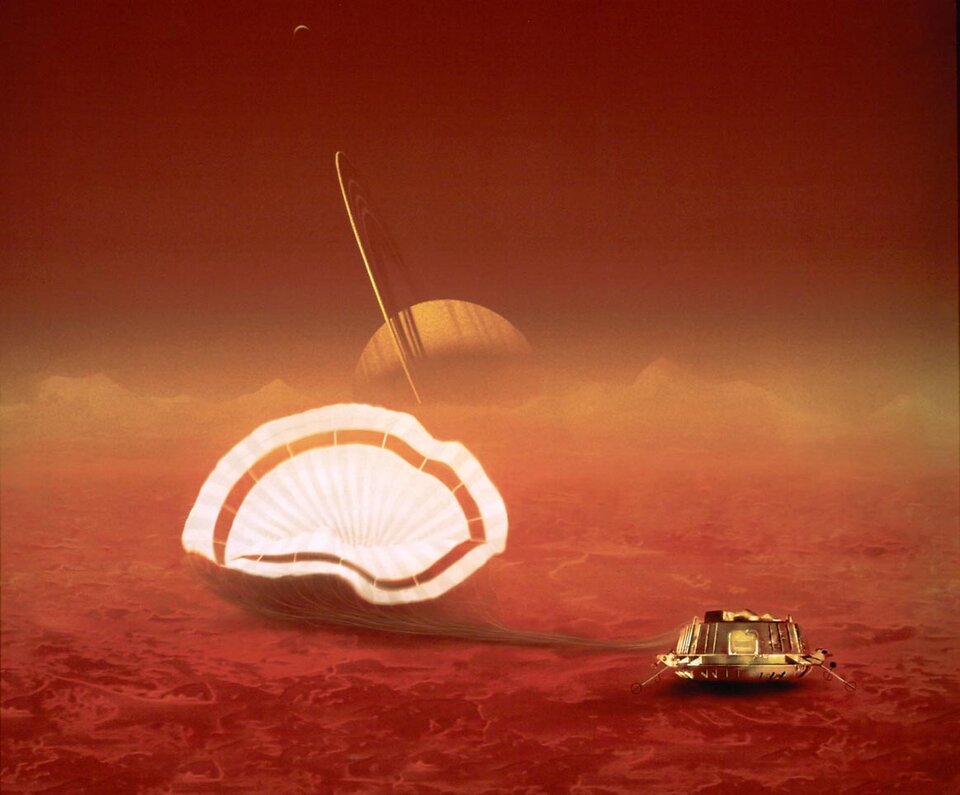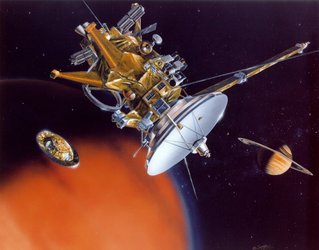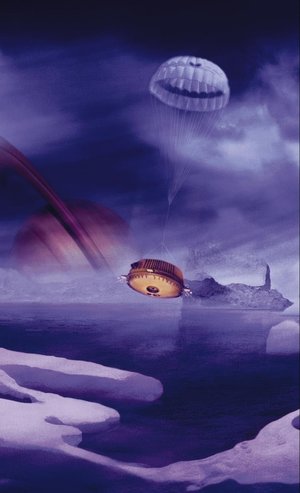ESA's 'shipping forecast' - from Titan!
ESA could be releasing its own marine weather report next January - but not for any Earthly ocean. Thanks to the NASA/ESA Cassini-Huygens mission, the first data about an extraterrestrial ocean may finally be received, ending 25 years of scientific speculation.
There is a growing body of evidence that at least part of Titan’s surface is covered with liquid methane and a related chemical, ethane. On Earth, methane is a gas but at the colder temperatures of Titan, around –180°C, it could exist as a liquid or be frozen solid into ice. If it is a liquid, it could exist as lakes in craters or even as vast oceans.
Recent radar observations suggest that up to seventy-five percent of the surface may be covered in liquid. In that case, it is highly likely that after its descent through Titan’s atmosphere, the Huygens probe will not so much land as ‘splashdown’.

To understand what to expect if this happens, the Principal Investigator of the Huygens Surface Science Package, John Zarnecki of the UK’s Open University, has teamed up with Nadeem Ghafoor, Surrey Satellite Technology, and colleagues from the Southampton Oceanography Centre.
Together, the team used a computer model to predict the behaviour of the ocean on Titan. They looked at the waves they might encounter.
On Earth, wind drives the waves. By placing Titan’s characteristics into their computer program, the team discovered that Titan’s waves will be slow-motion giants, reaching some seven times the height of a typical wave on Earth. Their height is mostly generated because Titan’s gravitational strength is only one seventh that of Earth.
Titan's waves would look seven times bigger but move three times more slowly than those on Earth, giving surfers a wild ride!
If Huygens does land on an ocean, the Surface Science Package will attempt to measure its composition, and depth using sonar. It will also record the frequency and height of any waves that pass.
Extreme sports fans might find surfing on these waves a wild ride, according to Nadeem Ghafoor, because the waves would look seven times bigger but move three times more slowly than those on Earth.
Of course, the sea would be 180 degrees below zero and it would not smell very good either. The surroundings would be a murky orange-brown because of the permanently overcast conditions and there might be the occasional iceberg to dodge near the shore!
In short, Titan could be like nothing like we have seen before and Cassini-Huygens is due to reveal all on 14 January 2005.















 Germany
Germany
 Austria
Austria
 Belgium
Belgium
 Denmark
Denmark
 Spain
Spain
 Estonia
Estonia
 Finland
Finland
 France
France
 Greece
Greece
 Hungary
Hungary
 Ireland
Ireland
 Italy
Italy
 Luxembourg
Luxembourg
 Norway
Norway
 The Netherlands
The Netherlands
 Poland
Poland
 Portugal
Portugal
 Czechia
Czechia
 Romania
Romania
 United Kingdom
United Kingdom
 Slovenia
Slovenia
 Sweden
Sweden
 Switzerland
Switzerland






























